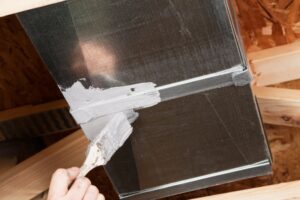In the 1970s, new homes started to be routinely built with ductwork for the new central air conditioning systems. Those ducts are also often how heat is conducted through homes. This is a great system that continues to be the standard for most new construction.
However, even the best systems occasionally have problems. The main issue that ducts face is leaking: deterioration from age, or damage caused by anything from rodents to remodeling. With ductwork generally sealed away out of sight, how can you tell if there’s a leak? Here are some telltale signs to keep an eye out for.
Increased Utility Bills
No one wants to pay more for the same result. When ducts are leaking, you can lose up to 30% of your heated or conditioned air to unoccupied spaces, like between your walls! That means paying a great deal more for your home comfort, not to mention forcing your heating and cooling systems to work harder. If your bills are much higher than they used to be, you might have a duct leak.
Cold or Hot Spots on the Walls
That heated or conditioned air that’s escaping from cracks in your ductwork might cause the drywall near those cracks to be noticeably warmer or cooler than other areas of wall. If you notice this symptom, schedule air duct repair in Ashburn, VA to get expert assistance.
Noise
Humming, rattling, or buzzing can occur from ducts being cracked, or from sections of ductwork becoming disconnected from one another. While your heater or air conditioner will make some noise, you shouldn’t hear anything from the ducts themselves.
Low Airflow
When air is released in the wrong places, there might not be much left when it gets to the vents. That can mean that instead of a blast of chilled or heated air, you only feel the gentlest breeze when you put your hand to a vent.
Air the Wrong Temperature
When cracks or openings allow air from surrounding areas to be sucked into the ducts, it dilutes the hot or cold air that should be flowing through there. Then, when it reaches the vent, the air is simply lukewarm instead of hot or cold.
Uneven Temperatures in Different Rooms
Ductwork branches out from a central point to carry heated or cooled air to various vents throughout the house. If the damage is in the section of ductwork leading to one particular vent, you might find that while most of the house is easy to keep at an ideal temperature, that one room always stays a little too hot in the summer or a little too cool in the winter.
Ductwork can be patched and sealed, sections of ductwork can be reattached if they’ve come apart, and if the damage is extensive, sections can be replaced. But it all starts with realizing there’s a problem. If you’re concerned about your ductwork, we’d love to hear from you.
AllTech Services, Inc. is your trusted resource for duct repair. Contact us today!


